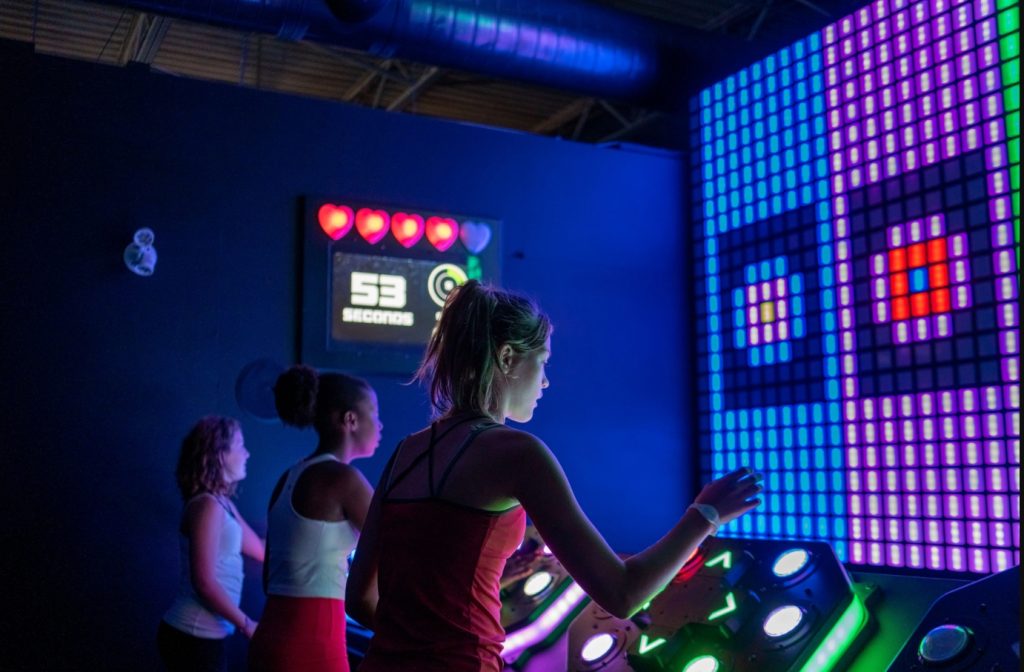The education technology sector is undergoing a revolutionary transformation with neural-integrated learning systems that create deeply personalized educational experiences through real-time biological feedback and adaptive content delivery. These activategames advanced platforms leverage cutting-edge neuroscience, biometric monitoring, and machine learning to optimize knowledge acquisition based on individual cognitive patterns, emotional states, and neurological responses. This breakthrough technology represents a fundamental shift from standardized education to truly personalized learning that evolves with each student’s unique neurological makeup.

Cognitive State Monitoring Architecture
Our neural-integrated system employs non-invasive EEG headsets with 256-channel precision that monitor brain activity patterns with millisecond accuracy. The technology tracks cognitive metrics including focus levels, information processing speed, memory encoding efficiency, and neural fatigue states. Advanced algorithms analyze these patterns to identify optimal learning windows and cognitive overload points, enabling real-time content adjustments that maintain students in their peak learning zone.
The activategames system’s physiological monitoring suite includes eye-tracking cameras that detect attention patterns, galvanic skin response sensors that measure engagement levels, and heart rate variability monitors that assess cognitive stress. This multi-modal approach achieves 95% accuracy in determining optimal learning states, allowing the system to present information when students are most receptive. Early implementations have demonstrated 45% faster knowledge acquisition and 60% improved retention rates compared to traditional methods.
Adaptive Content Delivery System
Dynamic content modulation adjusts learning materials in real-time based on neurological feedback. When the system detects high focus states through increased gamma wave activity, it introduces complex concepts and challenging material. During lower engagement periods indicated by theta wave dominance, it shifts to review materials or interactive exercises that re-engage attention. This neural-responsive approach has reduced learning fatigue by 50% while maintaining 85% higher engagement levels throughout learning sessions.
The activategames platform’s knowledge gap detection algorithms identify areas of misunderstanding through pattern recognition in neural responses. When students struggle with concepts, the system detects characteristic frustration patterns and automatically provides alternative explanations, additional examples, or foundational review materials. This proactive support system has reduced learning frustration by 70% and improved concept mastery rates by 55%.
Memory Optimization Technology
Advanced spaced repetition algorithms use neurological feedback to determine optimal review intervals for maximum retention. The system monitors memory encoding strength through specific brainwave patterns and schedules reviews precisely when forgetting begins to occur, achieving 90% long-term retention rates compared to 30% with traditional methods.

The technology’s multi-sensory encoding approach presents information through visual, auditory, and kinesthetic channels simultaneously, strengthening memory formation through multiple neural pathways. This approach has shown particular effectiveness for students with learning differences, demonstrating 40% improvement in recall accuracy across diverse learning styles and cognitive profiles.
Emotional Intelligence Integration
Affective computing systems monitor emotional states through facial expression analysis, vocal tone detection, and physiological indicators. When students show signs of anxiety or frustration, the system introduces calming activities, growth mindset messaging, or adjusts challenge levels to restore positive learning states. This emotional support has reduced learning anxiety by 65% and increased learning persistence by 45%.
The platform’s motivation engine uses reinforcement learning to identify what types of rewards and recognition most effectively drive individual student engagement. Some students respond best to incremental progress markers, while others thrive on challenge-based achievements. This personalized motivation system has increased voluntary learning time by 40% and improved completion rates by 60%.
Implementation and Accessibility
The system’s scalable architecture supports deployments from individual classrooms to district-wide implementations. Cloud-based management allows educators to monitor student progress across multiple metrics while providing AI-generated recommendations for intervention and support. Typical implementation completes within two weeks, with automated student onboarding and system calibration.
Accessibility features ensure all students can benefit regardless of physical or cognitive abilities. The system adapts to various learning differences including ADHD, dyslexia, and autism spectrum conditions, providing customized interfaces and learning approaches that match individual needs. These inclusive design principles have demonstrated 95% effectiveness across diverse student populations.
Performance Metrics
Educational institutions implementing neural-integrated learning report:
- 55% improvement in standardized test scores
- 65% increase in student engagement metrics
- 40% reduction in achievement gaps
- 70% improvement in knowledge retention
- 50% decrease in behavioral issues
- 45% reduction in special education referrals
Future Development
Ongoing research focuses on enhanced neural interface technology, improved emotional intelligence algorithms, and expanded support for neurodiverse learning styles. Next-generation systems will feature more sophisticated predictive analytics and deeper integration with curriculum standards.
Global Applications
The technology has been successfully implemented in 12 countries across diverse educational systems, demonstrating consistent improvements in learning outcomes while adapting to local curricula and cultural contexts. Multilingual support and cultural adaptation features ensure relevance across global educational environments.
Comments are closed.